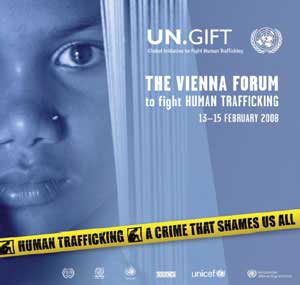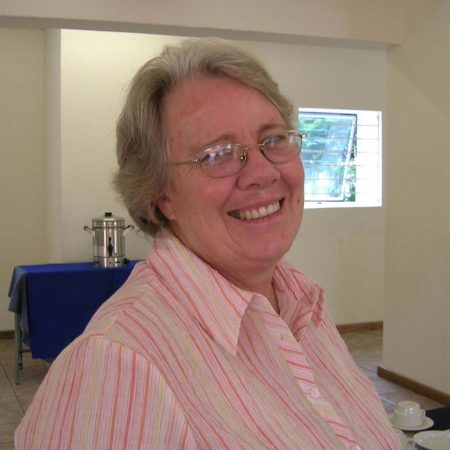“In 1810, Saartjie Baartman, a 21-year-old South African Griqua woman, employed as a servant on a farm Near Cape Town, was lured to England by Dr. William Dunlop, who promised her fame and fortune. Baartman readily accepted his offer and travelled with him to London by ship. Shortly after arriving in London, Dunlop chose to exhibit her in the nude in front of large crowds of Londoners, who paid one shilling to view the ‘Hottentot Venus’ from Africa. Baartman was made to parade naked along a stage, two feet high, led by her keeper and exhibited like a wild beast, being obliged to walk, stand or sit as he ordered and she was depicted as a wild animal in a cage, dancing for her keeper.
Eventually, in order to feed herself and survive, Baartman turned to prostitution. When she died, abandoned and alone in France, only six years after leaving Cape Town, her body was dissected, her skeleton was removed and her brain and genitals were pickled and displayed as curiosities in the Musee de l’Homme in Paris for the next 160 years.
In 1994, President Nelson Mandela made an official request to have her remains returned to South Africa. Her story is, as one commentator notes, ‘the most notorious case of African trafficking never to have been named as such’. But her experience of recruitment by deception and cross-border transportation for sexual exploitation is one common to millions of women, children and men worldwide.” (E. G. Pahad, Minister in the Presidency, at the Interfaith Dialogue: What Religious Communities Can Do to Combat Human Trafficking, Cape Town, South Africa, 3rd – 5th October 2007)
Despite the increasing global attention and national responses, human trafficking is, today, a tragic reality. Although the majority of the UN member states have ratified the Protocol to Prevent, Suppress and Punish Trafficking in Persons, Especially Women and Children, human trafficking still remains a crime with low risks and high profits: a crime which violates the basic human rights of victims.

There are clearly efforts being made to eradicate trafficking in persons, but the challenges are immense. In March 2007 the UN Global Initiative to Fight Human Trafficking (UN.GIFT) was launched in order to enhance the global efforts of all stakeholders to collectively address human trafficking in a multi-faceted manner by bringing in partners from within and outside the UN.
In the past twelve months, UN.GIFT has held events throughout the world, to gather information, build networks and develop concrete measures to fight this modern form of slavery. The Vienna Forum to Fight Human Trafficking, which was held in the Austria Centre, Vienna, from 13th – 15th February, 2008, was one of these events.
The objectives of the Vienna Forum were to raise awareness, facilitate cooperation and forge partnerships among governments, business, the entertainment industry, law enforcement officials, the media, faith communities, and academia. The Vienna Forum was designed within this framework to take stock of what has been done already and to share these experiences. Dynamic discussions were generated among the 1600 participants and innovative approaches to combat this crime were highlighted.
During the opening session, the keynote speeches were given by Antonio Maria Costa, Executive Director United Nations Office on Drugs and Crime (UNODC), Suzanne Mubarak, First Lady of Egypt, and Emma Thompson, actress and Chair of the Helen Bamber Foundation. Emma Thompson did not deliver a speech. She simply told the tragic story of a trafficked woman she had met in London. This woman’s story inspired Emma to create an inter-active art exhibit called ‘The Journey’. This exhibit, which had been transported to Vienna for the Forum is displayed in 7 containers, each showing a section of the woman’s journey from the moment of her abduction through her trauma until her escape – a very moving piece of art.
The panel discussions covered a wide range of topics: the role of women leaders, the role of the media in building images, the role of the private sector, the role of youth, health and human trafficking, technology and human trafficking, trafficking in persons for the removal of organs and body parts – to name a few.
Religious leaders have a strong influence on society all over the world and religious communities are actively involved in combating and preventing human trafficking in persons as well as supporting and assisting victims. Representatives of different faiths discussed how to increase collaboration among faith communities to fight human trafficking in regions of origin, transit and destination. Colleen Wilkinson rsm, from South Africa, was invited by the International Organisation for Migration (IOM) to share the experiences of religious Sisters in this work.
 Sr. Colleen Wilkinson
Sr. Colleen Wilkinson
Julia Ormond, actress and Goodwill Ambassador to the UN, addressed the participants at the welcome reception held in the Hofburg Palace. She gave some very disturbing facts about child pornography on the internet. Internet pornography is classed as trafficking in persons because the images are moved or transported across cyberspace. Criminals setting up these websites earn up to $2 million a month from subscribers.
In this fight against the ‘crime that shames us all’, cooperation must be sustained and the talk must be moved to action. Different groups and individuals can work in the areas of prevention, protection and prosecution, but in partnership, not competition.
The forum was closed with a performance by Ruslana, winner of Eurovision 2004. Her song ‘Not For Sale’ gave witness to the fact that we are all in this fight to eradicate modern-day slavery.
It is acknowledged that in South Africa people are trafficked within its borders: in addition, South Africa is a country of origin, transit and destination for international trafficking.
What can we do to eradicate trafficking of people? What happens to children who disappear? Street children? Prostitutes? Refugees? How do we as members of our society treat women? What is our attitude to products of cheap labour and to people who are forced to sell their labour cheaply?
We hear a lot about the 2010 Soccer World Cup and the many benefits flowing into our country because of our hosting it. Have we considered the problems it will bring? Increase in prostitution and abuse of women and children: and an even greater opportunity for human trafficking.
The first step is to make ourselves aware of what is happening around us. IOM is already actively involved and willing to share their experience and expertise. They have conducted workshops to equip participants with skills to combat human trafficking: more than thirty religious Sisters from six Southern African countries have attended these training courses.
The Catholic Church has become more involved in this ministry. The Southern African Catholic Bishops Conference has set up a ‘human trafficking desk’ to co-ordinate the various projects already in existence, to establish new ones and to work towards the eradication of this modern form of slavery.
More information on the Vienna Forum can be found at www.UNGIFT.org
Colleen Wilkinson rsm
South African Province


